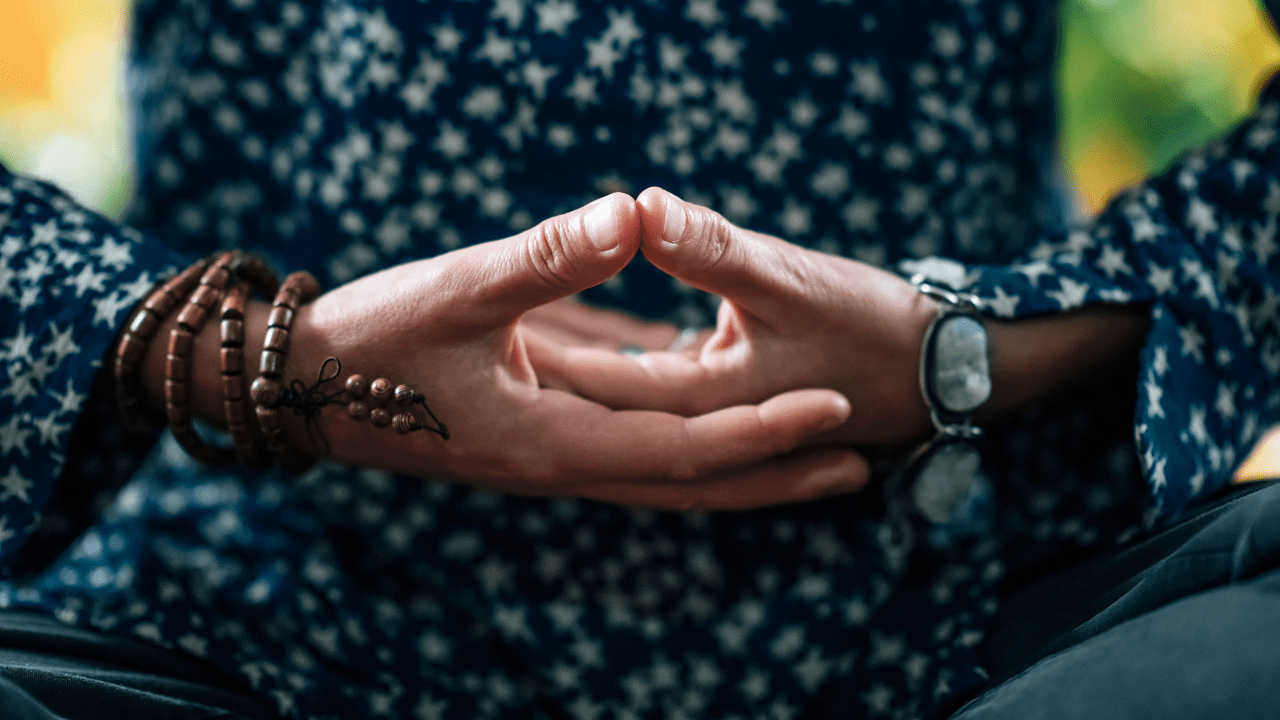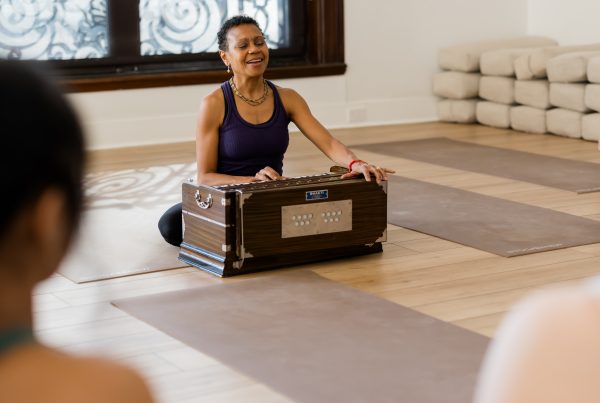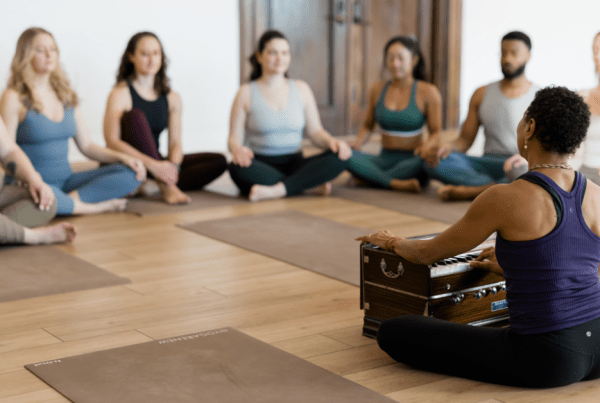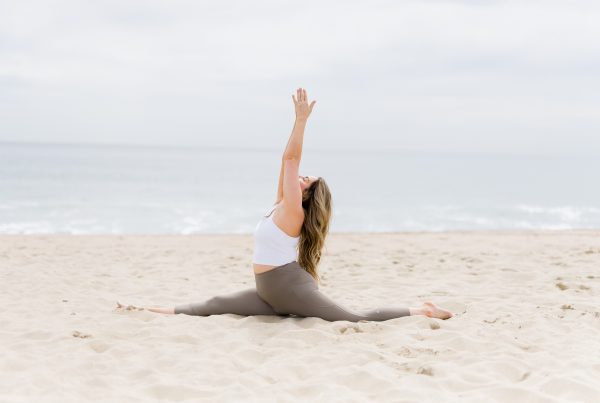
Any of these sound familiar?
- You read an article that says how meditation is good for your mental and physical health, stating lots of facts about the longevity of people who do this practice.
- A friend swears that meditation helps with the stress caused by their job/relationship/kids/living situation/family/bank balance.
- You see a photo of someone who looks both healthy, serene, and somehow buff and beautiful, sitting with eyes closed, cross legged in a beautiful place, with the words THE POWER OF MEDITATION written in fancy lettering underneath it.
And then you try. You really give it a shot. You play calming music, dim the lights, maybe even get a candle or incense, or a cool embroidered cushion. You close your eyes, you take a breath – and then, this conversation ensues:
You: Release, relax, let go!
Your Mind: Hmm…. I wonder what I should have for lunch.
You: Release, re…
Your Mind: I cannot believe my brother said that to me three years ago. I mean, come on, that was totally not fair!!
You: Re..
Your Mind: I wonder if those pants I really liked are on sale.
You: AWWW FORGET IT! I CAN’T MEDITATE!!!!!
For a lot of folks, meditation is a pipe dream – something that sounds and looks really good, but appears to be impossible. And, that can be bad news if you are looking to achieve the goal of yoga, which is more than just being calm. The actual point of yoga is to get the mind, (that has been so incredibly active), to be so still that our true identity as spirit soul can shine forth.
We can think of it like this. If your eye glasses are dirty, you could not see yourself in a mirror. For most of us, our minds are like those glasses – they are blocking the soul from actually perceiving itself. The method of cleaning the glasses is meditation, in Sanskrit, (the language of yoga), it is called Dhyana.
Defining Dhyana
The Yoga Sutras of Patanjali, define Dhyana like this (3.2): Meditation is the one-pointedness of the mind on one image.
It is interesting that this anga (limb) of the Ashtanga (eight limbed) Yoga System is found in the third pada (foot) of the Yoga Sutras – I know, there was a lot of leg parts in that statement! In this system of yoga, most of the other angas are in the second pada – which is often described as the book on practice – but not Dhyana, or the step right before it, Dharana. Meditation is found in the portion of the book entitled “Mystic Siddhis”, meaning (basically) super powers! So, yes, if you find it hard to meditate, the Yoga Sutras is saying that it’s up there with being Wonder Woman!
Though this seems difficult, the fact remains that EVERYONE has meditated at some point or another in their lives, even you, and maybe you just didn’t even realize it. That day you might have lost track of time when you were so absorbed in a writing project. The way you felt “in the flow” when you were dancing, surfing, running, skiing. In all of these instances, were you not “one-pointed”? It is a mistake to think that meditation looks only one way…
Ways in which Dhyana is Practiced
In the Yoga Sutras, the sage Patanjali, gives several different options on the object one can use as their focal point for meditation.
- Mantra: Quite early in the text, Patanjali mentions contemplation on the word OM, as a way of bringing the mind into focus. OM, which I jokingly call the official sound of yoga, is much more complicated than it would appear. It is more than a single word, it is a mantra. Man – meaning mind, Tra – meaning to go around the mind. In the language of Sanskrit – a word, and the meaning of the word are “non-different”. Exactly how water and ice are different forms of each other, therefore not the same, but not two different things. The mantra of OM (really written AUM) is one of the verbal representations of The Supreme Being. In Sutra 1.28, meditating on this mantra is stated as a means to achieve the one pointedness of Dhyana. In Bhakti Yoga, mantras are the primary means of meditation. When spoken, it is called Japa, and when sung it is called Kirtan.
- Breath: Sutra 1.34 states that meditation can be practiced by exhaling and retaining breath. Earlier in the Yoga Sutras, the practice of Pranayama (breath retention) is also mentioned. This is something most of us have practical experience with. When panicked, why do we say, “Take a deep breath!”? We know the power of one long, steady, still exhale to calm ourselves. What is occurring when we do that is that we are using the voluntary control we have over the respiratory system to affect our nervous system. Pulling it from “flight or fight” to “rest and digest”.
- Sense Objects: While yoga talks a lot about not letting the senses pull you outward to the world of things, as opposed to inward to the residence of soul. Sutra 1.35 , says one can focus on a sense object to focus the mind. Think of the experience of bringing your attention to tip of the nose, or the tip of the tongue – that gives a person a very tangible thing to hang their mind on. Bhagavad Gita 6. 13-14 states: One should hold one’s body, neck and head erect in a straight line and stare steadily at the tip of the nose.
- Another Being (Community): Sanga – association in English, is of the utmost importance in yoga. Having people in your life, you exemplify the qualities of yoga, who can inspire you, lead you, uplift you. Our care givers when we were young were very right – we do become who we hang around with. I love that it is said that we are the average of the five people we spend the most time around! When we fill our lives with people, especially teachers and mentors who live the principles we aspire to, we can use them as our compass and their qualities can be what we train our mind on. (Sutra 1.37) This is why the convention of a Guru (a spiritual teacher), is so esteemed in the yogic path. We have teachers for so many things, should we not also have a teacher for our spiritual lives?
Dreams: Yes – Dreams!!! In the Yoga Sutras, dreams are one of the categories of thoughts we think. And, each of these categories can be used to help us uncover our true selves. Dreams, from a yoga standpoint, come from impressions on the mind called Samskaras. Think of a ball of clay – when you touch it, it makes an impression. The more you touch it, the more it changes shape, and the pattern you created gets more and more fixed. When in our waking hours, we begin to hold an image in our minds, so much that it appears in our dreams, we can then use our dreams to make it come even more into focus when we are awake. (Sutra 1.38) - Anything: In Sutra 1.39, Patanjali writes: Steadiness of the mind is attained from meditation upon anything of one’s inclination! That’s right… anything!!!! And this is where I go back to saying, we all have meditated, we just didn’t realize it. Any time we have fixed our mind on one single thing, and hold it there, it is Dhyana – meditation.
Let’s look at some things that meditation could look like in our contemporary lives:
- Asana (the physical yoga practice)
- Running
- Biking
- Walking
- Dancing
- Surfing
- Sports where you are constantly engaged – basketball, soccer
- Handicrafts – knitting, crochet, needlepoint
- Cooking
- Reading
- Writing
- Singing
- Making art
And it could also be:
- Anger
- Envy
- Long ago slights
- Negative thought patterns
Both lists could go on and on… and both the Yoga Sutras and the Bhagavad Gita tell us that we can use the focus of our mind either to our ultimate benefit, or to degrade ourselves. To paraphrase the Bhagavad Gita, “Our mind could either be our best friend or our worst enemy.” It depends on what we are meditating on day in and day out. That points to how we set ourselves up for meditation and the ancient texts give us clues.
Preparing for Dhyana
The title of the sixth chapter of the Bhagavad Gita is often translated as Dhyana Yoga. In it, Lord Krsna describes how the ancient yogis would go to the forest for meditation, live in seclusion in a sacred place and cover a spot on the ground with a particular type of grass. The yogi was to live a life of regulation, and sense control – neither eating or sleeping too much or too little. (6.12-17) While most of us won’t be tripping off to the woods to live 24/7, for 365 days a year, we can take our cues from this. To meditate, we have to make the space for it – both physically, and in our lives. Find that place that can be solitary, and for you, sacred. It can be anywhere: A corner of a cramped NYC apartment, a park bench, a book store. Anywhere that gives you a sense of peace, and where you feel you can go within.
Where the senses go, the mind will follow and that is why the Gita, the Sutras, and pretty much any yogic text point to controlling the senses. My teacher says that consciousness can only flow two ways – out to the world of things, or in, to the world of spirit. The senses pull us outwards, so the control of them, is a major preparation for Dhyana.
How to Practice Dhyana
Both the Gita and Sutras point to our relationship to others as an important step to being able to practice Dhyana. Sutra 1.33 (literally my favorite Sutra!) says from the cultivation of friendship toward those who are happy, compassion toward those in distress, joy toward those who are virtuous, and equanimity toward those who are non-virtuous, lucidity arises in the mind. The Gita mirrors that in 6.9: A person is considered still further advanced when he regards honest well-wishers, affectionate benefactors, the neutral, mediators, the envious, friends and enemies, the pious and the sinners all with an equal mind.
In other words, when we treat others with kindness, compassion, understanding and forgiveness, it soothes our minds, and brings it more to a place of peacefulness. And, we know this, don’t we? When do you feel more calm – when you are pissed off, or when you are feeling compassionate and loving?
Yoga teaches us that we have a secret inside of us – our identity as an eternal soul – but until we clean off the glasses blocking our view, we won’t ever know that. Dhyana, one could say, is the cleaning solution we need to wipe away that which we are not.







